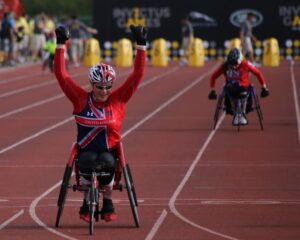Table of Contents
Physical-education-sports-for-cwsn-part-1
Physical-education-sports-for-cwsn-part-1, in this part we will learn about the Concept of Disability and Types of Disability.

Concept of Disability |
| 1. Disability is the reduction of functional ability to lead daily life. |
| 2. Disability is an impairment that may be cognitive, developmental, intellectual, mental, physical etc. |
| 3. It may be present in an individual from birth or occur during one’s lifetime. |
| 4. Disability is an injury that restricts the functions or movements of an individual. |
| 5. Disability is a medical condition that does not permit an individual to perform any activity or movement in a normal way. |
| physical-education-sports-for-cwsn-part-1 physical-education-sports-for-cwsn-part-1 |
Cognitive Disability |
| 1. a neurological disorder that creates hindrances or obstruction for an individual to store, process and produce information. |
| 2. This ability can affect an individual’s ability or capability to read, compute, speak and write. |
| 3. The individual’s, who have this type of disability, usually have following symptoms: |
i) Memory disorder:An individual who has auditory problems or difficulty in remembering something that he heard, said or saw before sometime. |
ii) Hyperactivity:An individual with cognitive disability may not have attention for a long period. He finds it difficult to stay at one place. |
iii) Dyslexia:In this disorder a person faces difficulty in reading, writing, speaking etc. It is also called reading disability, dyslexia affects areas of brain that process language. |
Intellectual disability |
| 1. It is a disability characterized by significant limitations both in intellectual functioning (reasoning, learning, problem solving) and in adaptive behavior, which covers a range of everyday social and practical skills. |
| 2. this disability is related to the individual’s thought process, communication, money, learning, problem solving and judgment. |
Physical disability |
| 1. it is a limitation on individual’s physical functioning, mobility, dexterity or stamina. |
| 2. Other impairments such as respiratory disorders, blindness, epilepsy and steep disorders, which limit other facets of daily living, are also included in physical disabilities. |
| 3. Physical disability may either be motor deficiency or sensory impairment. |
| (Dexterity = skill in performing tasks, especially with the hands) |
Causes of disability |
| a) Genetic cause: |
| 1. Abnormalities in genes and genetic inheritance cause intellectual disability in children. |
| 2. Sometimes, diseases, illness and over exposure to x-rays may cause genetic disorder. |
| b) Mental health problems |
| 1. problems such as depression, bipolar disorder etc. may lead to disability. |
| 2. They tend to be some of the most misunderstood disabilities. |
| c) Accidents: |
| 1. Accidents may occur anywhere, anytime and to anyone |
| 2. These accidents may happen at workplace, on the roads or in the air. |
| 3. These accidents may lead to disability. |
physical-education-sports-for-cwsn-part-1 physical-education-sports-for-cwsn-part-1
To read other parts of this chapter kindly click below
